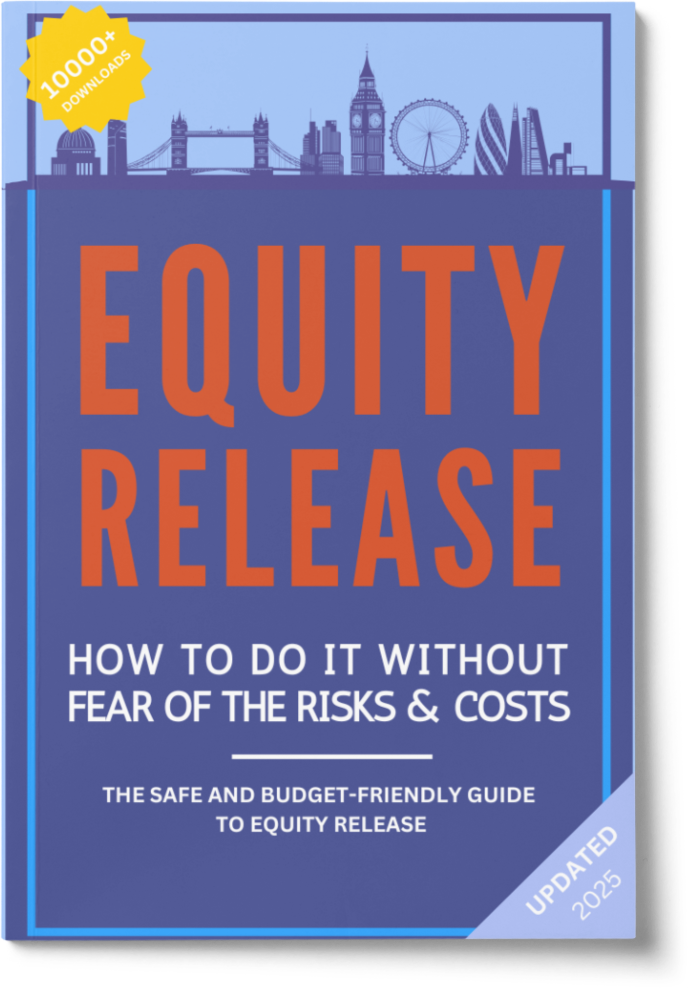Enhanced Equity Release: The Ultimate Guide in 2025

SovereignBoss adheres to a stringent code of editorial guidelines, but some articles may feature partner references. Here is an explanation for how we make money.
- Enhanced equity release offers benefits such as larger lump sum payments and lower interest rates, especially for those with certain medical conditions or lifestyle factors.
- It works by lending a larger sum against your home's value, based on your health and lifestyle factors.
- Risks include potential reduction in inheritance, impact on benefits, and the risk of negative equity.
- Eligibility typically depends on your age (usually 55 or over), the value of your property, and your health and lifestyle factors.
- To apply, you can compare offers from multiple lenders, consult a financial advisor, and then submit your application through a provider.
The principle of enhanced equity release, although frequently considered important in the realm of financial planning, is often misunderstood.
Lower life expectancy may result in different terms for an equity release plan, and it's important to understand these nuances.
In This Article, You Will Discover:
After thorough research, our experts at SovereignBoss aim to clarify the intricacies of enhanced lifetime mortgages, debunk common misconceptions, and highlight potential benefits and risks.
Take a look.
What’s an Enhanced Equity Release Plan?
An enhanced lifetime mortgage is one type of equity release plan that might offer more funds and possibly lower interest rates, but only if individuals have certain health conditions or meet certain lifestyle criteria.
It’s also known as an impaired lifetime mortgage.
How Does an Enhanced Equity Release Plan Work?
An enhanced lifetime mortgage works by you, the homeowner, completing a health and lifestyle questionnaire.1
If you meet the criteria, a lender might propose a plan with potentially lower interest rates and greater equity, contingent on your condition's severity.
Here’s how
It’s based on life expectancy and it offers a larger loan amount to those with a shorter predicted lifespan.
Tax-free cash is released in a lump sum or to a drawdown facility with an initial lump sum.
Finally, the loan, plus interest, only needs to be repaid when you pass away or enter long-term care.
Who Qualifies For an Enhanced Equity Release Plan?
Enhanced equity release plans, also known as 'ill-health' or 'impaired' lifetime mortgages, are designed for homeowners who have certain health conditions or lifestyles.
Lenders consider several factors, including but not limited to:
- The applicant's age
- Certain health conditions
- Lifestyle factors (like smoking or obesity) that could potentially shorten life expectancy
It's important to note that the eligibility criteria can vary between lenders and products.
What Are the Pros & Cons of an Enhanced Equity Release Plan?
The pros and cons of an enhanced equity release plan include that you can access additional equity, but the loan will reduce your estate value.
Benefits of an Enhanced Equity Release Plan
An enhanced lifetime mortgage plan can present several potential advantages, including:
- More cash than offered by standard equity release schemes.
- Lower interest rates than standard equity release schemes.
- An option for a drawdown facility so you can access cash for big medical expenses, whenever it’s required. Lenders usually don’t require medical checks to qualify for the drawdown facility, but the applicant's health and lifestyle conditions still play a significant role in the process.
- A ‘no-negative equity guarantee’2 which ensures you or your estate will never owe more than what the property is worth.
Drawbacks of an Enhanced Equity Release Plan
As with any financial product, enhanced equity release plans also have potential disadvantages that should be carefully considered.
Some of the facts you need to consider include:
- It may result in little or no property inheritance left to pass on to your beneficiaries.
- The interest rates tend to be higher than those on conventional mortgages.
- The plans could take longer to set up if your broker requires you to provide a doctor’s report.
- Taking a more considerable lump sum might affect your entitlement to means-tested benefits.
- The companies could levy early repayment charges if you decide to settle the plan earlier than intended.
Given these advantages and disadvantages, exploring alternative financial strategies such as downsizing, renting a room, or using savings, might be beneficial.
In order to do this, you should consult an equity release advisor or broker experienced across all later-life lending options.
What Are the Costs of an Enhanced Equity Release Plan?
The costs associated with an enhanced equity release plan typically encompass an arrangement fee, a valuation fee, solicitor's fees, advisory charges, and compound interest.
Annual interest can be available from 6.05%*.
View the most current rates here.
*While we regularly review our rates, these may have shifted since our last update.
How Can You Use the Funds From an Enhanced Equity Release Plan?
The funds released from an enhanced equity release plan can be used for various purposes, although it's important to consider the impact on your overall financial position.
Common uses include supplementing retirement income, paying off existing debts, funding home improvements, or covering healthcare costs.
Here’s more
The released funds can also support personal goals like holidays or providing early inheritance, subject to the guidance of a financial advisor or broker.
Common Questions
How Long Does an Enhanced Equity Release Plan Last?
Is an Enhanced Equity Release Plan Suitable for Me?
What Are the Benefits of Enhanced Equity Release?
Can I Choose to Receive the Funds From an Enhanced Equity Release Plan in Regular Installments?
Are There Any Tax Implications Associated With an Enhanced Equity Release Plan?
How Does an Enhanced Equity Release Plan Affect My Inheritance?
How Does Enhanced Equity Release Work?
How Can I Protect My Estate With an Enhanced Equity Release Plan?
What Happens to the Enhanced Equity Release Plan if I Move or Sell My Home?
Can I Make Repayments on an Enhanced Equity Release Plan?
What Happens to My Enhanced Equity Release Plan When I Die or Move Into Long-Term Care?
Are There Any Risks Involved in Enhanced Equity Release?
What Are the Eligibility Criteria for Enhanced Equity Release?
How Can I Apply for Enhanced Equity Release?
Conclusion
Enhanced equity release plans can be a valuable financial solution if you’re 55 or older with health conditions or considering lifestyle factors, as they could provide access to your property's value for current or future needs.
However, before proceeding, it's crucial to fully grasp the implications on your estate, benefits, and tax situation.
While it provides flexible cash access and the potential for an improved retirement lifestyle, seeking professional advice is essential as equity release may not suit everyone.
Remember that equity release represents a lifelong commitment that should align with your financial goals and retirement vision.
Furthermore, to safeguard your interests, you should make sure your enhanced equity release plan complies with Financial Conduct Authority and Equity Release Council guidelines.
WAIT! Before You Start…
Equity Release Calculator
How Much Equity Can You Release?
Spotted a Mistake? Let us know here.




